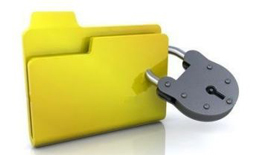WINDOWS 8.1 COOL FEATURES
AJAY.E
START BUTTON IS BACK!!!!!!!!!!!!!!!!!!!!!!!
1. Turn the Start screen into an app launcher
It can be difficult to find the app you need from the Windows 8 Start screen, because tiles take up so much of the screen. There is, however, a way to turn the Start screen into a useful app launcher. On the desktop right-click the taskbar and select 'Properties', then click the 'Navigation' tab. In the Start screen section, tick the box next to 'Show the apps view automatically when I go to Start'. From now on, when you go to the Start screen you'll see a list of all your apps rather than those big tiles.
2. Boot to desktop
Plenty of people have little or no use for the Start screen, but in the past this has been the default lamding page when you boot up your PC. Now Windows 8.1 offers the option to go straight to the desktop when you log in. On the desktop right-click the taskbar and select 'Properties', then click the 'Navigation' tab. In the Start screen section, tick the box next to "When I sign in or close all apps on a screen, go to the desktop instead of Start." From now on, when you log into Windows, you'll go straight to the desktop.
3. Open the Metro version of Internet Explorer 11 in multiple windows
One of the better known features of Windows 8 is the Snap action, that allows you to run two apps side-by-side. With Windows 8.1 you can also run two instances of IE11 in multiple Snapped windows. However, Snapping one instance of IE11 to one side of the screen and then attempting to open a second instance doesn't work. You have to open multiple tabs in one window, and then press and hold or right-click one of them and select 'Open tab in new window'. Unfortunately other apps don't appear to offer multi-window capabilities.
4. Shut down from the Start button
The Start button is back, but the Start menu is not, meaning that you still need to go through several steps involving the charm bar if you want to shut down your PC. Alternatively, right-clicking the Start button brings up an array of menu options, including quick links to functions like Disk Management and Command Prompt tools. With Windows 8.1, this menu includes a 'Shut Down' option, and hovering over it also gives you the option to restart your PC, removing the need to return to Metro mode.
5. Quiet hours
With Windows 8, Microsoft meshes several desktop and mobile features. One of those mobile features is app notifications, which pop up with a sound when you get a message. These can be useful during the day, but it can get annoying if your laptop is pinging away through the night. Windows 8.1 adds a Quiet Hours setting that lets you silence notifications for specific times of the day. Access this setting by opening the 'Settings' charm, navigating to 'Change PC Settings' followed by 'Search and apps' and 'Notifications'.
6. IE11 Reading View
Reading View strips the clutter and advertisements from the article you are reading and presents the information in a pleasant, horizontally scrolling format. To enable Reading View, just click the open-book icon on the right side of IE11's address bar. Reading View also appears integrates with the new Reading List app in Windows 8.1, so when you bookmark an article with this app from IE11, it will display in Reading Mode later.
7. Hands-free mode
One of Windows 8.1's coolest features is buried deep in the new Food & Drink app, which is full of all manner of delectable recipes. However, when you're making cake and your hands are all covered in butter and flour, it may not seem like the best moment to be using a touchscreen. Fear not, because Windows 8.1 has a hands-free mode, which lets you flip through the steps of the recipe by waving your hand in front of your device's webcam.
